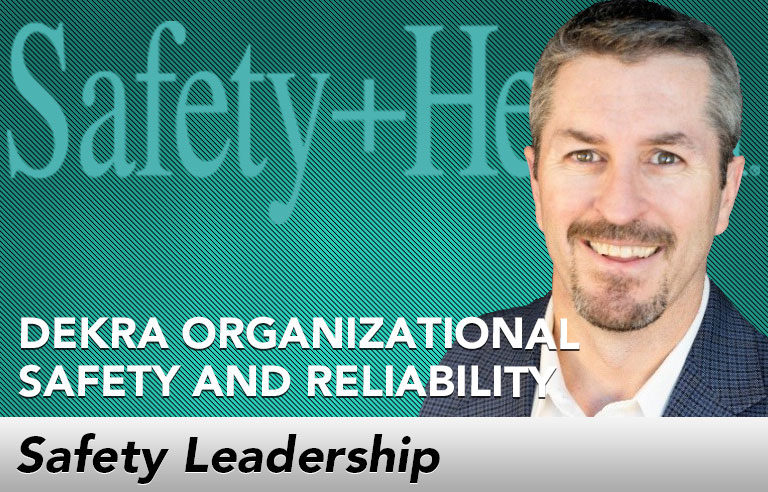Safety Leadership: Understand brain functions to understand mistakes

EDITOR’S NOTE: Achieving and sustaining an injury-free workplace demands strong leadership. In this monthly column, experts from global consulting firm DEKRA Organizational Safety and Reliability share their point of view on what leaders need to know to guide their organizations to safety excellence.
As safety leaders, we need to understand how the intersection of culture, leadership, systems and process is key to determining whether exposure is controlled in the workplace. All four areas are linked in keeping workers safe from injuries or fatalities. Paying attention to fewer or none creates vulnerabilities that no organization wants.
Focusing on production over safety will more likely create incidents because more exposures go uncontrolled. We know that when work schedules and overtime demands require people to work in a fatigued state, errors will be more frequent. We also know that when safe processes are not given the level of management oversight required, more errors occur.
Yet, even when organizational culture, leadership, systems and process are strong and supportive, good people still make mistakes.
These aren’t necessarily because of sloppiness or carelessness, but because they didn’t discern the exposure – given how the human vision system operates – or they didn’t recognize the exposure as a problem. Another reason is because they didn’t complete all steps in a procedure because of fatigue, distraction or running on autopilot. Finally, they may not have involved others in the process of error identification and prevention.
When we work alone, all of us are particularly susceptible to these errors. However, working within a team isn’t necessarily a fix and, in fact, may even foster additional opportunities for error. In actuality, some incidents occur because other people were present.
For example, two construction workers are halfway through building 20-foot scaffolding. As one worker attaches the horizontal ledger for the next level to the vertical uprights through a coupler, he runs into a problem. The coupler has some dirt stuck in it and the tube won’t seat properly. The second worker comes to help. Together, they try to jam the tube into the coupler, but it still won’t go. The first worker thinks to himself that they should inspect it and try to remove the debris. The second thinks to himself that jamming it was making progress and they should try again. The first worker puts his finger in the coupler to try to remove the material at the same time the second worker tries to jam the tube in again, severely cutting the first worker’s finger.
As leaders, the challenge is embracing the dynamics of the brain and understanding how it functions, and not falling into the trap of thinking that people who make mistakes are bad people. We also have to recognize that telling people simply to be more aware will not solve the problem.
Recent neuroscience research indicates that many of the causes of these types of errors are a result of how the brain is designed to operate. In many cases, these characteristics – what we call brain-centric hazards – help our brains be more efficient but, in some cases, can increase exposure to injury and error.
We all can visualize physical hazards such as ice on a sidewalk, an unguarded rotating shaft, a speeding driver or the movement of a heavy load with workers nearby. But it’s more difficult to visualize hazards housed in our brains. If left unattended, brain-centric hazards can create high-consequence exposures.
Controlling brain-centric hazards requires that critical elements align with how the human brain actually works. Organizations need a system to address reliability gaps within work environments, technological interfaces, operating procedures, training, work schedules, decisions, risk perceptions and the leadership-driven messages that shape organizational culture.
All components of operational reliability must be aligned and draw on the latest neuroscience to achieve sustainable success.
There is no silver bullet for eliminating all error from the workplace. However, organizations can put strong defenses in place.
Effective leadership, a mature culture, brain-aligned systems and countermeasures enable “right-first-time” performance to occur more often and more consistently across the organization, especially within safety and operation critical tasks.
This article represents the views of the author and should not be construed as a National Safety Council endorsement.
 Michael Mangan, Ph.D., leads DEKRA Organizational Safety and Reliability's (dekra-insight.com) research and development department. He is responsible for facilitating global thought leadership and generating new innovations across the organization.
Michael Mangan, Ph.D., leads DEKRA Organizational Safety and Reliability's (dekra-insight.com) research and development department. He is responsible for facilitating global thought leadership and generating new innovations across the organization.
Direct to your inbox: Sign up to be notified in email about new Safety Leadership columns.
Post a comment to this article
Safety+Health welcomes comments that promote respectful dialogue. Please stay on topic. Comments that contain personal attacks, profanity or abusive language – or those aggressively promoting products or services – will be removed. We reserve the right to determine which comments violate our comment policy. (Anonymous comments are welcome; merely skip the “name” field in the comment box. An email address is required but will not be included with your comment.)

